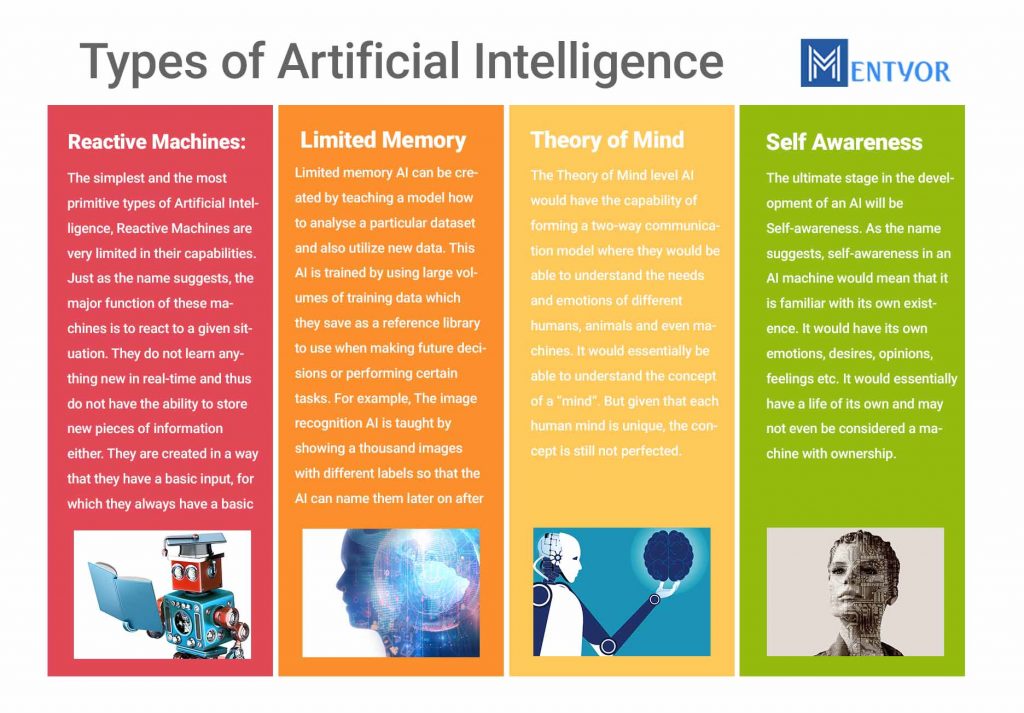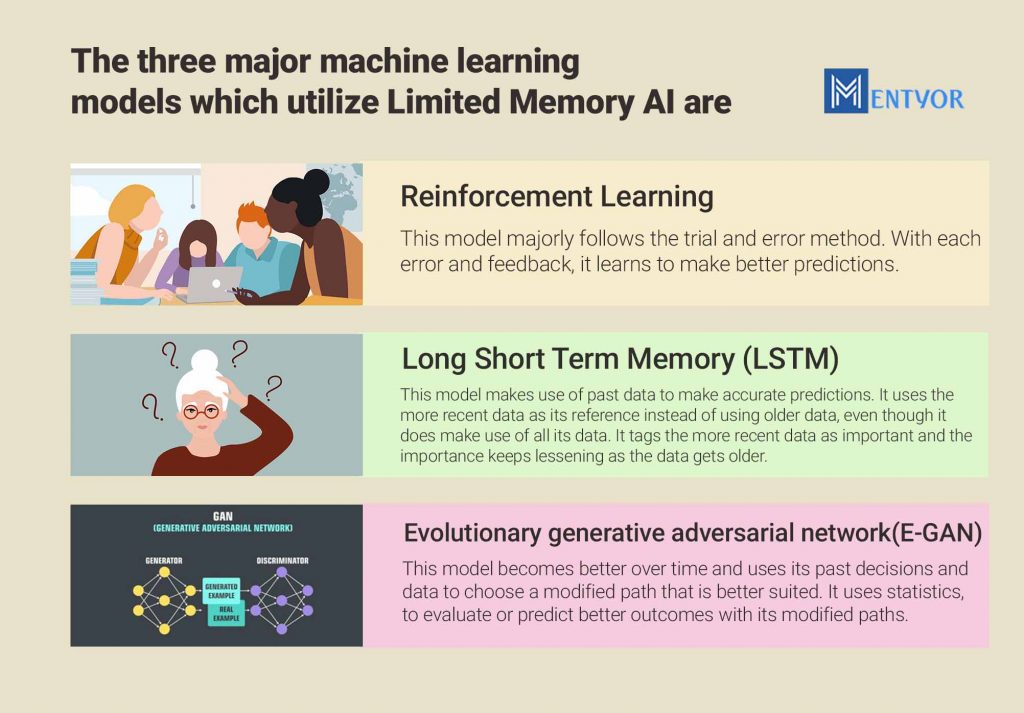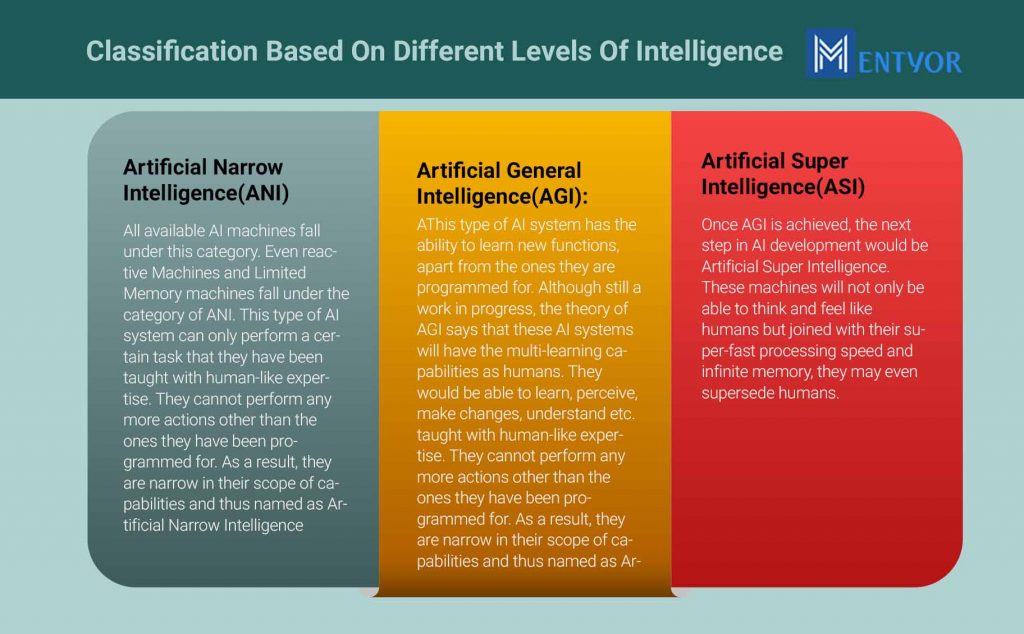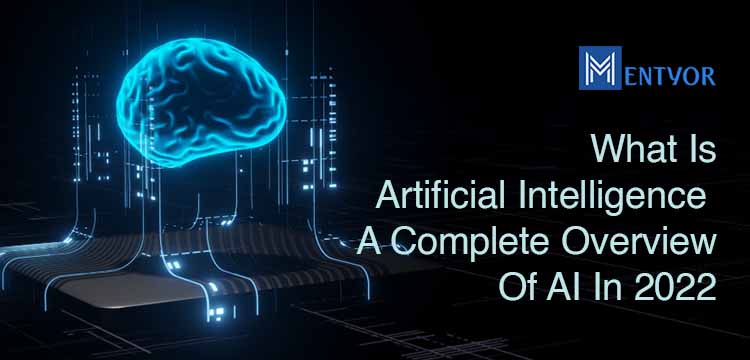Self-driving cars, Virtual Assistants or even interactive robots may have just been a figment of the imagination a few decades back. But now these things are not only real but are simply just a small proof of how machines are only going to get smarter from here. Artificial Intelligence is the next upgrade to having a smarter and more efficient world.
To answer what is artificial intelligence, it simply refers to providing computing machines with the ability to impersonate human intelligence and their decision-making capabilities.
Alan Turing, the pioneer in the field of computer science, was the one who is credited with starting the discourse on Machines having intelligence. “Can Machines Think?” – was the question that Alan Turing asked in his groundbreaking paper called “Computing Machinery and Intelligence” This question marked the beginning of the discourse that is only moving forward and onwards. Self Learning Intelligence or as popularly known AI, has revolutionalized the world.
Whether it be Healthcare, Finance or even day-to-day lives, we all use AI knowingly or unknowingly. In 2020, pandemic-stricken governments across the world used Self Learning Intelligence to enforce social distancing. A small needle in the haystack of uses and benefits that it provides. Read on as provide you with a complete guide on what is Artificial Intelligence
Learn about Data Science and Data Analytics: Difference Between Data Science And Data Analytics: A Complete Breakdown
Artificial Intelligence Definition
To understand What is Artificial Intelligence better, let us see the definition of it. John McCarthy, one of the founding pillars of the AI discipline can be found saying, “It is the science and engineering of making intelligent machines, especially intelligent computer programs. It is related to the similar task of using computers to understand human intelligence, but AI does not have to confine itself to methods that are biologically observable.”[1]
How Do You Define Intelligence?
Artificial Intelligence as a topic has cited lots of mixed reactions from the public. Some approve of this innovative science but some pose questions doubting it. The biggest question being posed by researchers and the common public alike is ‘How do you define intelligence?’. According to psychologists, Intelligence is not just a single characteristic, but rather a collaboration of different traits and relevant discernment and decisions.
When John McCarthy, considered to be one of the founders of the discipline of AI, was asked “Isn’t AI about simulating human intelligence?”, He answered by saying, “Sometimes but not always or even usually. On the one hand, we can learn something about how to make machines solve problems by observing other people or just by observing our own methods. On the other hand, most work in AI involves studying the problems the world presents to intelligence rather than studying people or animals” [1]
Read more about AI: ARTIFICIAL INTELLIGENCE: AN ULTIMATE GUIDE
In a way that could also mean that making a machine smart would mean making it more adaptable to problems. One important facet of Intelligent Machines is their ability to learn and then store information for the same.
According to a paper titled “Artificial Intelligence” by BJ Copeland, Research in this has been focused on mostly five categories of Intelligence: [2]
- Learning
- Reasoning
- Problem-solving
- Perception
- Using language
Types of Artificial Intelligence
It can be classified into 4 major types based on their likeness to “think” or maybe even “feel” like a human mind. The 4 major types are:
- Reactive Machines
- Limited Memory
- Theory of Mind
- Self-Awareness

Let us explore each category in detail.
Reactive Machines:
The simplest and the most primitive types of Artificial Intelligence, Reactive Machines are very limited in their capabilities. Just as the name suggests, the major function of these machines is to react to a given situation. They do not learn anything new in real-time and thus do not have the ability to store new pieces of information either. They are created in a way that they have a basic input, for which they always have a basic output. This represents the first stage of any AI system.
Although limited in capabilities, the USP of this type of AI is its reliability and proficiency in performing a certain repeatable task. An example of a Reactive Machine that is popular is the Deep Blue machine, designed by IBM in the 90s. Deep Blue is a supercomputer specially designed for playing Chess. International Grand Master Gary Kasparov was defeated in a game by Deep Blue machines. Given that The Deep Blue machine is a reactive machine, it doesn’t store any kind of real-time data while playing the game.
The machine knows the rules of the game of chess and is familiar with every kind of combination of moves that can be made. So all it does is analyse the chessboard during every stage in the game. It neither stores the old moves of the opponent nor does it anticipate their future moves. But it rather takes every turn as a new game, and analyses the position of each present piece to make the best move possible.
Google’s AlphaGO is also a type of reactive machine. Although AlphaGO is also a reactive machine, it can evaluate developments in a particular game. AlphaGO was also able to defeat the Go Champion Lee Sedol in 2016.
Limited Memory
In addition to having the capabilities of a Reactive Machine, the AI with Limiting Memory have more enhanced features. Just as its name suggests, this type of Intelligence has evolved the ability to “learn”. They have the ability to store past data and also make predictions based on past and present data. In a way, they can make decisions for new situations based on their prior learning or predictions. Almost all AI-enabled machines present today are of this type and have the capability to learn.
Limited memory AI can be created by teaching a model how to analyse a particular dataset and also utilize new data. This AI is trained by using large volumes of training data which they save as a reference library to use when making future decisions or performing certain tasks. For example, The image recognition AI is taught by showing a thousand images with different labels so that it can name them later on after scanning.
What the image recognition AI does is, store the training data, and later on, it uses this stored training data as a reference to give the correct result. It evolves each time by learning new data, thus providing more accurate results. The training curve of a limited memory Intelligence goes as follows:
- Create Training Data
- Create a machine learning model
- The model must be able to make predictions based on the data
- Human feedback or response should be accepted by the model
- The given feedback or response should be saved as data
- Repeat the cycle again.
The three major machine learning models which utilize Limited Memory AI are:

Reinforcement Learning
This model majorly follows the trial and error method. With each error and feedback, it learns to make better predictions.
Long Short Term Memory (LSTM)
This model makes use of past data to make accurate predictions. It uses the more recent data as its reference instead of using older data, even though it does make use of all its data. It tags the more recent data as important and the importance keeps lessening as the data gets older.
Evolutionary generative adversarial network(E-GAN)
This model becomes better over time and uses its past decisions and data to choose a modified path that is better suited. It uses statistics, to evaluate or predict better outcomes with its modified paths.
From self-driving cars to medical innovations and chatbots, all of these are examples of Limited Memory AI.
Read our blog about Google AI for Blind People: Google AI Based System Helps Blind People Run
Theory of Mind
The above-given categories of AI are the ones that are available today. All machines are either Reactive or Limited Memory based. The Theory of Mind AI is a stage that hasn’t been reached yet. This level of development in the field of it is still being researched. A theory of mind level would have the ability to discern between different human emotions and react accordingly. It is essentially a part of Artificial Emotional intelligence that is highly researched.
The Theory of Mind level AI would have the capability of forming a two-way communication model where they would be able to understand the needs and emotions of different humans, animals and even machines. It would essentially be able to understand the concept of a “mind”. But given that each human mind is unique, the concept is still not perfected.
Self Awareness
The ultimate stage in the development of an AI will be Self-awareness. As the name suggests, self-awareness in an this machine would mean that it is familiar with its own existence. It would have its own emotions, desires, opinions, feelings etc. It would essentially have a life of its own and may not even be considered a machine with ownership.
Once Theory of mind is established, it will give way to Self-Awareness. But this is where the tricky part comes in as all the naysayers for Artificial Intelligence are fearful of the day that the machines might become smart enough to take over Humanity. Thus although self-aware Intelligence may take civilizations decades ahead in future, it might also be catastrophic.
Classification Based On Different Levels Of Intelligence

An alternate classification that is most commonly used is the one based on different levels of Intelligence. These categories are:
Artificial Narrow Intelligence(ANI):
All available AI machines fall under this category. Even reactive Machines and Limited Memory machines fall under the category of ANI. This type of Intelligent system can only perform a certain task that they have been taught with human-like expertise. They cannot perform any more actions other than the ones they have been programmed for. As a result, they are narrow in their scope of capabilities and thus named as Artificial Narrow Intelligence
Artificial General Intelligence(AGI):
This type of Intelligent system has the ability to learn new functions, apart from the ones they are programmed for. Although still a work in progress, the theory of AGI says that these Intelligent systems will have the multi-learning capabilities as humans. They would be able to learn, perceive, make changes, understand etc.
Artificial Super Intelligence(ASI)
Once AGI is achieved, the next step in AI development would be Artificial Super Intelligence. These machines will not only be able to think and feel like humans but joined with their super-fast processing speed and infinite memory, they may even supersede humans.
Deep Learning VS Machine learning
Deep learning and Machine Learning are terms that some people might consider to be the same but it is not so. Although the terms deep learning and Machine learning are actually sub-type or rather a sub-category of Artificial Intelligence. While Deep learning is a further smaller part of Machine Learning.
Conclusion
Statistics says that the AI market around the world is expected to snowball in the next coming years and reach a market value of $190.61 by 2025. In addition to this, the estimate by which Self Learning Intelligence will contribute towards the global GDP is a $15.7 trillion or 26% global increase in GDP. [3]
Given these statistics, it shows that Artificial Intelligence as a discipline is only going to get more developed and advanced. The idea of having machines that can carry our civilization forward with leaps and bounds seems tempting and vicarious at best. But it is imperative to remember the risks that it poses as machines may become more sentient than human beings.
References
[1] McCarthy, J. (2012). What is AI? / Basic Questions. Stanford. http://jmc.stanford.edu/artificial-intelligence/what-is-ai/index.html
[2] Copeland, B. (2021, December 14). artificial intelligence. Encyclopedia Britannica. https://www.britannica.com/technology/artificial-intelligence
[3] Todorov, G. (2021, February 26). 65 Artificial Intelligence Statistics for 2021 and Beyond. Semrush Blog. https://www.semrush.com/blog/artificial-intelligence-stats/#general-artificial-intelligence-statistics


 WhatsApp
WhatsApp